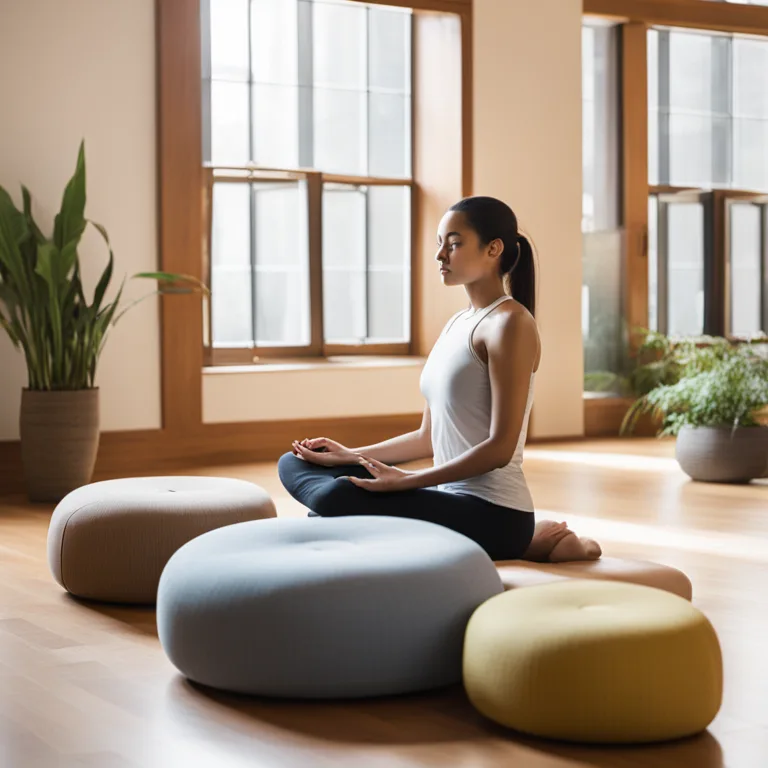
Master Meditation with These Induction Methods
Learn effective methods to enhance your meditation practice and achieve deeper mindfulness.
article by Hina Kurosawa
Setting the Stage for Serenity
Incorporating meditation into daily life begins with establishing a conducive environment. It's vital to choose a serene, interruption-free zone to cultivate a sanctuary for your practice. To signal your brain it's time to wind down, dim the lighting, and perhaps introduce soothing elements like scented candles or calming sounds. The aim here is to create a sensory experience that welcomes tranquility, allowing your consciousness to transition smoothly into a meditative state.

Embracing a Comfortable Posture
Physical comfort plays an instrumental role in meditation induction. Start by selecting a posture that supports both alertness and ease—whether it's a traditional cross-legged position, sitting in a chair, or lying down. The spine should stay erect, promoting energy flow and preventing drowsiness. Invest in cushions or mats designed for meditation to enhance comfort and maintain focus, preventing physical distractions from hindering your inward journey.

Breathing Techniques to Focus the Mind
Breathwork is a cornerstone of effective meditation practices. Techniques such as diaphragmatic breathing or the 4-7-8 method can help in harmonizing the body's rhythms and focusing the mind. Start by inhaling deeply, filling the abdomen, and then the chest. Hold this breath momentarily, then exhale slowly and completely. This controlled breathing acts as an internal metronome, stabilizing the mind and signifying it's time to delve into deeper states of meditation.

Guided Visualizations for Deep Relaxation
For those struggling to silence their thoughts, guided visualizations can be immensely beneficial. By immersing yourself in calming imagery, your mind becomes absorbed in the constructed narrative, naturally drifting away from external worries. Visualizations could range from imagining a serene beachscape to picturing a tranquil ascent up a mountain path. This technique transports meditators to a peaceful place conducive to insightful reflection.

Incorporating Mantras and Affirmations
Mantras and affirmations serve as vocal anchors during meditation, maintaining focus and setting intentions. By repeating a soothing mantra or positive affirmation, such as "I am at peace," you can keep extraneous thoughts at bay and anchor your mindfulness on the present. Synchronize the mantras with your breathing rhythm to establish a resonant, meditative cadence that fosters deep calming effects.
Utilizing Technology: Apps and Audio Tracks
In our digital age, embracing technology can significantly enhance meditation induction. Various apps and audio tracks offer structured meditation programs, with guided sessions tailored to your experience level. Binaural beats and isochronic tones can provide an auditory backdrop, facilitating a shift in brainwave patterns to states akin to meditation. These technological aids can be particularly helpful for beginners or those with hectic schedules wishing to integrate meditation into their routine.
Consistency is Key - Building a Habit
The consistent practice is a core aspect of deepening your meditation prowess. Establish a set time each day for meditation, creating a ritual that signals your body and mind to prepare for this quiet time. This consistency builds neurological pathways that ease the transition into a meditative state over time. Acknowledge that some days will be more challenging than others, but regularity is what paves the way to mastering meditation.
Published: 12/20/2023
Modified: 12/20/2023
More predictions
Come back here soon to learn more about yourself and your future


Counting Meditation Techniques
An informative guide on the diverse range of meditation practices available in the modern era.


The Many Paths of Meditation
Discover the vast array of meditation techniques enriching diverse practices worldwide.


Mastery in Koan Meditation
Delve into koan meditation techniques to deepen your spiritual practice and enhance mindfulness.